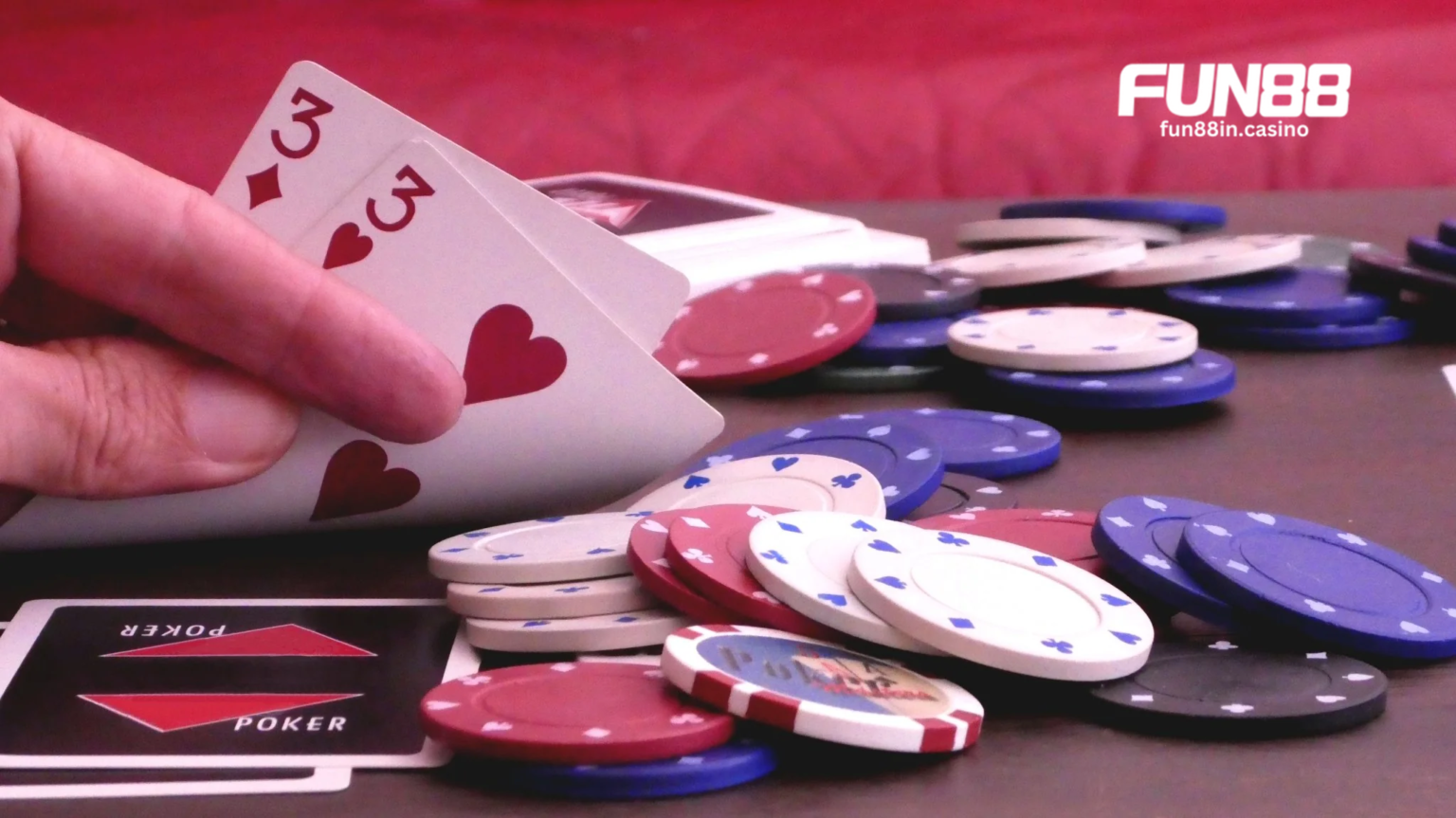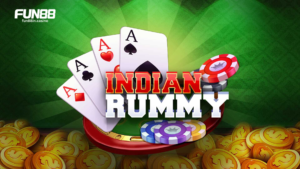Table of Contents

When you hear the term “Straddle,” you might not immediately associate it with Texas Hold’em, but it’s a common term you might encounter while playing poker live or online. If you’re a newcomer, you might find yourself bewildered by straddling. That’s why here at FUN88, we introduce what straddling is, whether it’s beneficial, and how to deal with it.
What is a Straddle?
A straddle is a voluntary blind bet made by a player before the cards are dealt. The most common straddle position is to the left of the big blind and is typically twice the size of the big blind. When a player straddles, they become the last to act before the flop, with the first action coming from the player to the left of the straddle.
Straddles are typically seen in live cash games as they’re not allowed in tournaments. Most online poker platforms do not support straddling, except for GG Poker and Natural 8, where it can be used in games.
In Texas Hold’em, multiple players can straddle in the same hand. If the player under the gun straddles, the next player can also choose to straddle (referred to as a double straddle). This can continue until the straddle reaches the button.
Most casinos have rules against straddling beyond the button, and some even limit the number of straddles allowed, such as a maximum of 2 or 3 straddles. Since straddling significantly increases the betting action, each straddle effectively doubles the previous bets.
For example, if you’re playing a $1/$2 game, the first straddle from under the gun would be $4, the second straddle would be $8, and the third straddle would be $16. Just after three rounds, the stakes have increased eightfold!
Types of Straddles
The most common form of straddle is the one described above, where the player to the left of the big blind is the only one allowed to straddle. However, some casinos allow other types of straddles. You might encounter three additional types: the button straddle, the Mississippi straddle, and the sleeper straddle.
Button Straddle
A button straddle occurs when the player on the button straddles, typically for twice the big blind. Depending on the casino, action starts either from under the gun or from the small blind. If action starts from under the gun, the button still acts last before the flop because action skips from the button to the small blind and then back to the button.
Mississippi Straddle
A Mississippi straddle allows any player to straddle except for the small blind and big blind. When a player initiates a Mississippi straddle, action starts from the player’s left before the flop, and the straddler acts last.
Sleeper Straddle
A sleeper straddle occurs when a player bets but their bet only becomes active when it’s their turn to act. For example, at a nine-handed table, a player behind the under the gun wants to straddle but it’s not their turn yet, so they place a sleeper straddle.
If the under the gun folds, the straddle becomes active, and action proceeds to the two players behind the under the gun, with the straddler acting last. However, if the under the gun calls or raises, the straddler can retract the straddle and continue playing normally.
Benefits of Straddling
Straddling in Texas Hold’em is often considered a losing proposition because it involves putting chips in without seeing any cards. The two least profitable positions at a poker table are the small blind and the big blind because they’re forced to bet. Straddling takes this to an extreme by voluntarily putting in twice the big blind.
When you straddle, you’ll find yourself folding most hands to a raise, just like you would from the big blind. However, some people continue to play even with bad hands because they’ve already committed chips, leading to losing more money. The advice here is not to straddle recklessly and to fold bad hands when you do.
One situation where straddling is considered a good strategy is when all players at the table are straddling. With everyone straddling, no one gains an advantage, making it a neutral strategy. Due to human nature, no one wants to be left out, so by straddling, you potentially gain more action in subsequent hands.
Why Straddle?
In the previous section, we covered one reason why people straddle, but what are some other reasons that lead people to choose to straddle?
One of the most common reasons is the love for gambling. Straddling increases the stakes, making the game more exciting, and a bigger pot means more opportunities to win money. For some, the thrill of playing a few hands with big bets outweighs the EV loss.
Certain poker players may try to exploit straddling on specific tables to gain a competitive edge. If the table is filled with loose-passive players who call with any two cards, then having a strong hand when you straddle can be advantageous to quickly build a pot. By straddling, you seize the initiative, and the number of times you win massive pots when facing calls outweighs the times you have to fold.
Straddling also reduces the relative stack depth, which is advantageous for players who like playing short-stacked. In cash games, stacks tend to grow quickly, and before you know it, most tables have players sitting with over 200BB. However, straddling reduces the chip depth since it’s essentially treated as a new big blind. For example, if you’re playing $1/$2 with a $400 stack, you have 200BB, but if someone straddles to $4, your stack is now 100BB.
How to Deal with Straddles?
Since straddling speeds up the game and changes the dynamics by altering the chip stacks, you should adjust your strategy based on the new stack sizes relative to the blinds. As the stack-to-blind ratio decreases, you should change your starting hand range before the flop. Hands like small pocket pairs and suited connectors decrease in value, while hands like KQ, AJ, and KJ, which have the potential to make top pair post-flop, increase in value.
Another consideration is the type of player who is straddling. Typically, it’s a looser opponent straddling, so you should be more aggressive against them with a stronger range because they’re less likely to fold either pre-flop or post-flop. Against these opponents, firmly bet for value with your strong hands to exploit their loose ranges.
In very rare cases, if you see a tighter opponent straddling, you can bet with a wider range against them because they’re less likely to defend their straddle like looser players do.
Summary
Although straddling can be fun and create interesting pots, it’s a gameplay style that often leads to losses. For those aspiring to become top-notch Texas Hold’em players, it’s advisable to steer clear of straddling. However, if you’re not the first player to straddle, joining others is acceptable. But if seeking excitement is your main goal, then go ahead and straddle to your heart’s content, as ultimately, playing poker is about seeking enjoyment!
After reading this article, you should have gained a decent understanding of straddling in Texas Hold’em. If you found this type of content helpful, you can visit FUN88 for more insights into Texas Hold’em!












